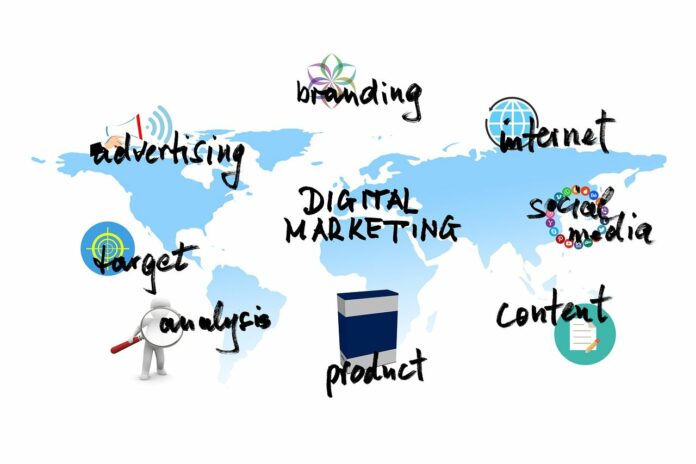Together, these factors form a classic marketing mix. These can be considered either as five essential parts or alternatively as five parameters that can be adjusted according to the chosen marketing strategy.
- Product: Supply planning, market niche and functionality.
- Price: The price of the product compared to competitors.
- Promotion: How the main messages of the product reach the public.
- Place: distribution and delivery channels and geographic availability.
- People: The team involved in selling the product.
Let’s take a closer look at the five P’s of marketers and business owners.
1. Product: What you sell
There is a lot to consider when it comes to your product. It’s not just about its design and functionality, but also how it’s packaged, whether there’s a warranty or guarantee, and whether support is included (if it’s a digital product).
For some products, especially high-end luxury products like watches and cars, product design can be (almost) comprehensive. For other products, such as FMCG (fast moving consumer goods), the product is important, but customer satisfaction is often less important than brand loyalty when price or availability become more important.
Product development activities such as focus groups and applying sentiment analysis to consumer reviews can help improve your product and solve problems. These product decisions can also provide key information about your product’s USP (Unique Selling Points).
2. Price: How much you sell it for
Consumer choices are almost always influenced by price (except for high-end luxury products such as jewelry and supercars). However, pricing isn’t as simple as checking what your competitors are paying.
Dynamic pricing has become a popular concept, as retailers like Amazon offer products at prices that fluctuate, sometimes hourly, as demand and availability change. Digital product categories, such as SaaS (software as a service) websites, often offer different pricing tiers, allowing businesses of all sizes to find the right subscription model for their use cases. They can also offer significant discounts because the delivery costs (fees) are minimal.
Much depends on the instincts of the sales representatives and the parameters within which they are allowed to operate. For both services and physical goods, prices have a minimum floor that ensures an acceptable profit margin. There is usually also a maximum limit that the market currently accepts. Established and trendy groups may adopt a premium pricing strategy, especially if scarcity (limited edition) is built in.
Late payment services have exploded in recent years, with some brands offering up to 0% credit terms (often through third parties such as Klarna and PayPal). It works well for big ticket items like technology, cars and appliances.
There are many price comparison sites that you may want to consider when choosing a price – in the age of the Internet, it has never been easier for consumers to compare your prices with those of your competitors. Retailers and brick-and-mortar stores sometimes offer a “price promise,” which often refunds the difference if the consumer finds the same product elsewhere for a lower price. In practice, of course, few consumers use this offer, but it helps to increase consumer confidence and reduce “buying”.
3. Promotion: Messages in the market
There have never been more distribution channels for your message. In addition to traditional advertising (which now includes public relations (PR), social media, search engine optimization and digital marketing), other options include event and media sponsorship, content marketing, direct sales via email, SMS and cold calling, and influencer marketing. . . PR is also a form of marketing that gets trade papers and consumer review sites to write about your products. An advertising campaign is about more than the creative content of the campaign – ideally it’s about choosing the perfect fit between product, message and media.
Read How to implement market intelligence in your campaigns
4. Place: Your path to market
Dissemination and implementation are important. There are two main components – the place of purchase and the method of delivery. On the one hand, it’s how and where your customers find your product (whether specifically looking for it or by accident). But it’s also about how the product is delivered (bought in store, loaded, delivered to your door). Car shows, markets, e-commerce sites, Buy Now links on Instagram are all examples of “places” where your customers can encounter your products. Secure Upload, BOPIS (Buy Online, Track In Store) and same day delivery are all fulfillment methods you can consider depending on the nature of your product and what customers want and expect. “Delivery” of Digital Products may also include product availability. Can it be downloaded on multiple devices? Does it require registration? Are fixes and updates automatically enabled during installation?
5. People: Sales related employees
The personality and persuasiveness of salespeople should not be underestimated. But in 2022, “people” will not only mean sales personnel, but also those who promote the product to the target audience for sponsorship and cross-marketing. Brand ambassadorship has become a huge industry worth over $16 billion in 2022, according to Influencer Marketing Hub. Unpacking, travel, podcast sponsorships, event sponsorships and other activities use popular internet personalities and celebrities to sell key products.
B2B sales aren’t immune either, as LinkedIn is becoming a great way to find industry influencers to help sell your product. Incentives such as referral fees are often offered for this service. In classic brick-and-mortar sales, presentation and attitude are everything—polite, knowledgeable, and a subtle persuasion to arrogance. The same is true of distance selling, especially in B2B, where salespeople sell big ticket items to their target markets who become trusted and knowledgeable.
Read more on marketing visit Mezink, download now!
